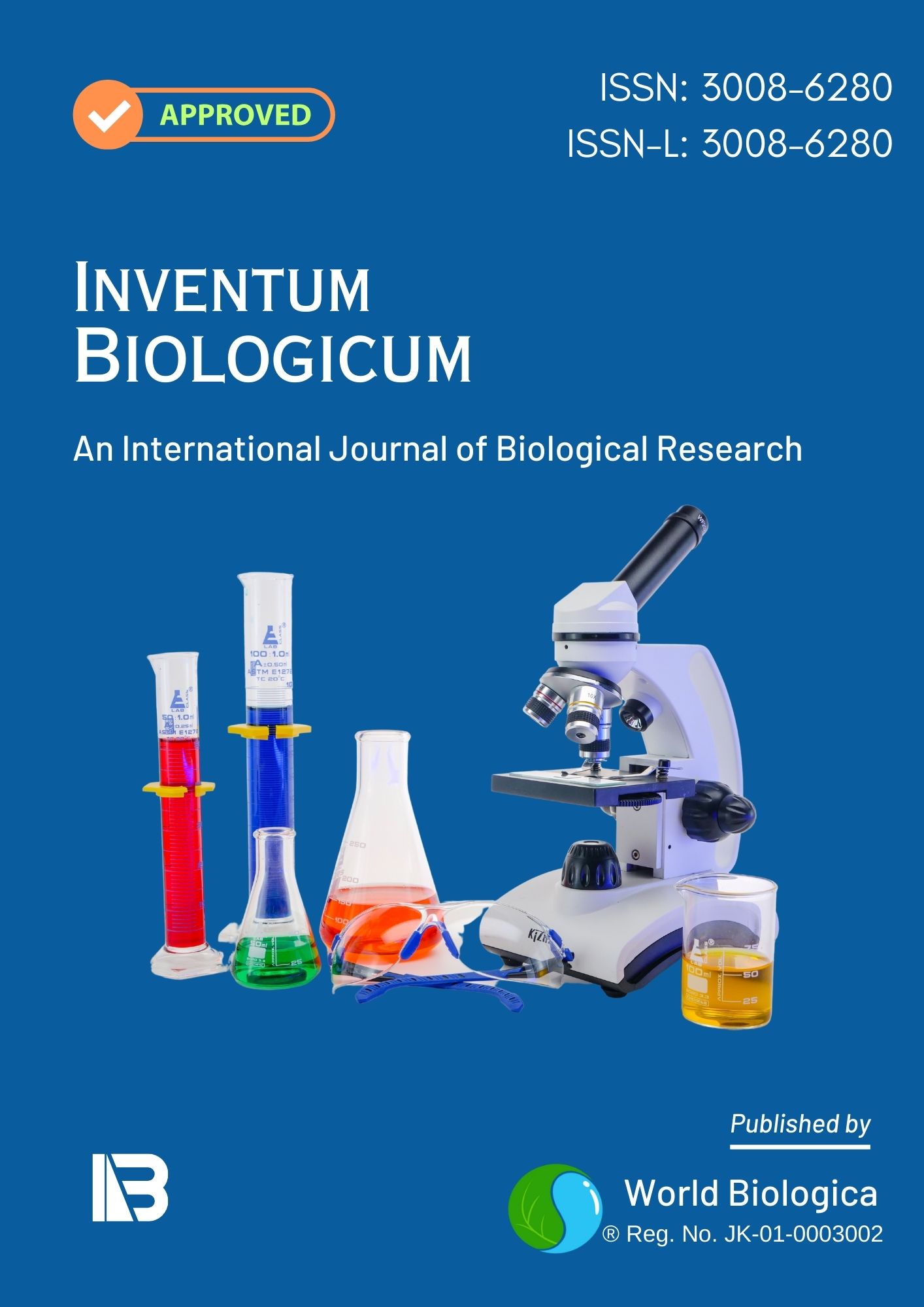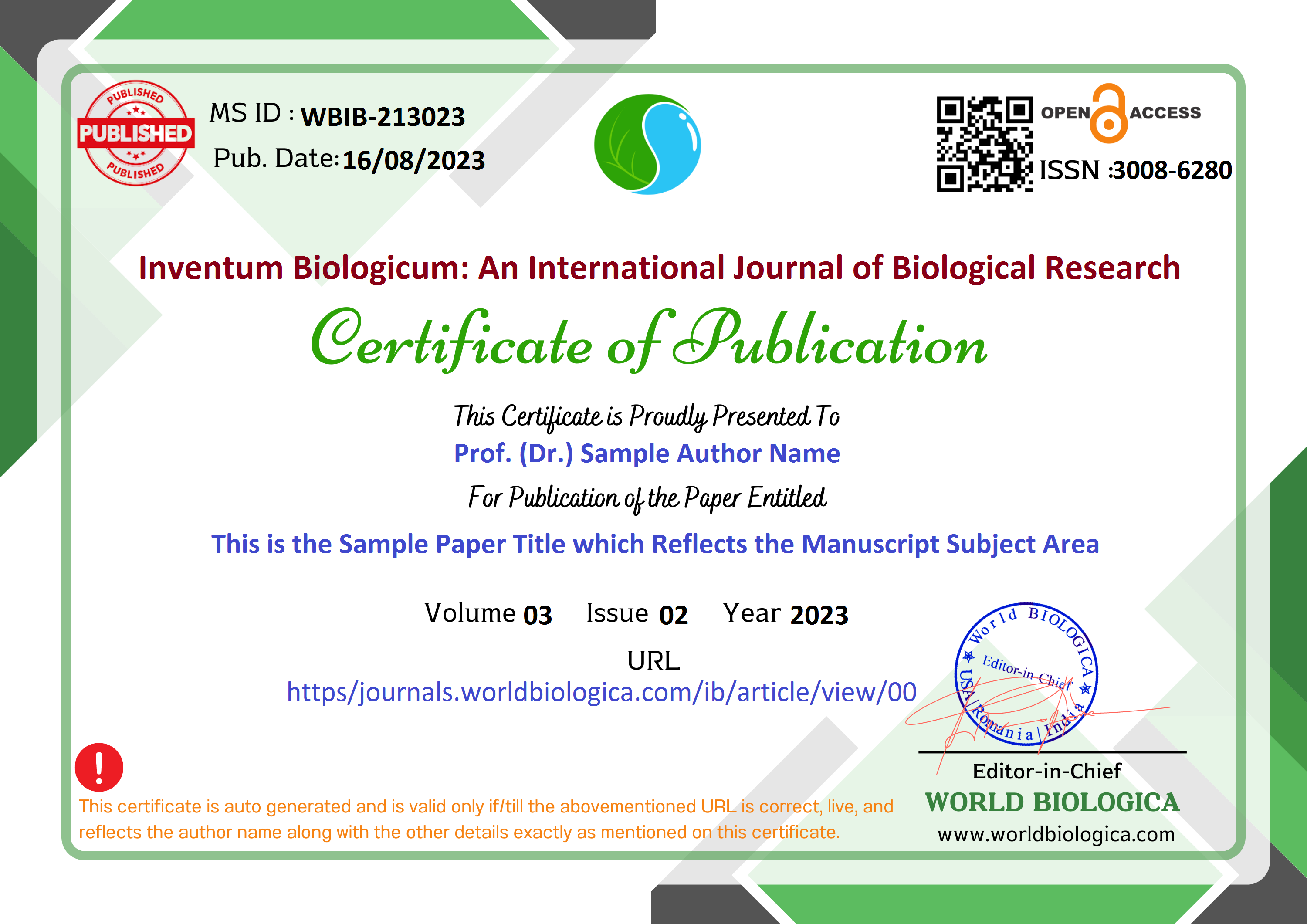Preparation of Fish Glue from Three Different Types of Freshwater Fishes (Oreochromis niloticus, Labeo rohita, Labeo catla)
Keywords:
Fish glue, Oreochromis niloticus, Labeo rohita, Labeo catla, CollagenAbstract
This study investigates the preparation of fish glue from three different species of freshwater fish: Oreochromis niloticus (Tilapia), Labeo rohita (Rohu), and Labeo catla (Catla). Fish glue, a natural adhesive derived from collagen-rich materials, has been historically significant in various applications, including woodworking, art conservation, and culinary uses. The project aims to utilize fish swim bladders, a byproduct of the fishing industry, to produce a sustainable adhesive, thereby promoting environmental sustainability and reducing waste. The methodology involves extracting collagen from the swim bladders through a multi-step process, including cleaning, soaking, and heat treatment. The quality of the produced glue is evaluated based on its adhesive properties and potential applications. The findings highlight the ecological and functional advantages of using fish glue over synthetic alternatives, emphasizing its role in enhancing the economic value of fishery resources.
Downloads
References
Gorin, V. & Cherkasova, I. (1977). Techniques of Russian conservators using sturgeon glue. In JAIC 32(1).
Cool, C. (1993). Sturgeon glue for painting consolidation in Russia. JAIC.
Garrity, C., et al. (2023). “Tilapia Fish Skin Treatment of Third-Degree Skin Burns in Murine Model”. Journal of Functional Biomaterials, 14(10), 512. https://doi.org/10.3390/jfb14100512
Huang, Q., et al. (2011). "Collagen extraction from fish scales and skin: A sustainable approach." Journal of Applied Polymer Science.
Akter, S., Sheikh, B., Rahman, M., Bhowmik, S., Alam, N., Rahman, M.A., & Alam, A.N. (2016). "Assessment of Fishery Wastes and Suitability of Its Utilization in the Manufacture of Fish Glue." American Journal of Food and Nutrition, 6(3), 77–81. Link to article
Dos Santos Rodrigues, K., de Melo, E.S., da Paz Lima, I.C., Bacelar, R.G.A., dos Anjos, A.M.P., Muratori, M.C.S., & Nobrega, M.M.G.P. (2021). "Drying of Residual Tilapia Skin from Filleting Using a Thermophotovoltaic Solar Dehydrator." Acta Veterinaria Brasilica, 15, 166–172.
AOAC Association of Official Analytical Chemists. Official Methods of Analysis of the AOAC, 15th edition, Washington DC, 1990.
Belitz HD, Grosch W. Food Chemistry. Springer Varlag, New York, London, 1987.
Brody J. Fishery by Products Technology. The AVI Publishing Company Inc., Westport, Connecticut, 1965.
DoF. Department of Fisheries, Ministry of Fisheries and Livestock, Government of the People’s Republic of Bangladesh, Fish Week Compendium, Dhaka, Bangladesh, 2014.
Firth FE. The Encyclopedia of Marine Resources. Van Nostrand Reinhold Company, New York, 1969.
Gomez-Guilleen MC, Turnay J, Fernandez-Diaz MD, Ulmo N, Lizaebe MA, Montero P. Structural and physical properties of gelatin extracted from different marine species. Food Hydrocolloids 2002; 16:25-34.
Information Technology Center, Department of Fisheries, Ministry of Agricultural and cooperatives, Thailand, Fisheries Statistics of Thailand 2008, No. 12/2010, 2010.
Kremer-Pigmente. Bone glue (63000), hide glue (63010–63020), rabbit skin glue (63025, 63028, 23052), gelatin (63040), isinglass (63100), Salianski-isinglass 63110, fish glue (63550), Franklin Hyde Glue (63500 – 63512), product data sheets, Kremer Pigmente GmbH & Co. KG, Aichstetten, Germany, 2007.
Lehninger AL, Dasar-dasar Biokimia Jilid, Terjemahan. Erlangga, Jakarta. 1988.
Muyonga JH, Cole CGB, Duodu KG. Extraction and physico-chemical characterisation of Nile perch (Latesniloticus) skin and bone gelatin. Food Hydrocolloids. 2004; 18:581-592.
Norland RE. Coatings Technology Handbook (3rd edition).CRC Press. 2005, 65.
L. Cornelissen & Son, 22 Great Queen St., London, WC2B 5BH United Kingdom, Supply glue in the dry state, as thin, stransparent strips ca. 2 mm wide
Kremer Pigments 61 East 3rd St., New York, N.Y. 10003, Supply glue in the dry state, in thinker and larger sheets
Pinene Kodak Laboratory Chemicals, Eastman Kodak Company, Rochester, N.Y. 14650
Ahmadi, N., Shakeri, A., Zandi, M., and Alishahi, A. (2018). Isolation and Characterization of Gelatin Extracted from Different Fish Species in Iran. Journal of Aquatic Food Product Technology, 27(4):466-474.
Dr. P. Ayodhyareddy / Afr.J.Bio.Sc. 6(5) (2024).3312-3327 A study on ichthyofaunal diversity of munneru river of Khammam (D) TS. Page no: 3312-3327.
Downloads
-
Download PDF
 Abstract Views: 500,
Abstract Views: 500,  Download PDF: 138
Download PDF: 138
Published
How to Cite
Issue
Section
License
Copyright (c) 2024 Inventum Biologicum: An International Journal of Biological Research

This work is licensed under a Creative Commons Attribution-NonCommercial-NoDerivatives 4.0 International License.

















